
The Moon Hare: An Autumn Easter Story
- posted in: News
- / with 5 comments
The story of The Moon Hare celebrates the richness, fun and simplicity of bringing the Easter festival to children within an Autumn landscape.
Sun comes up, life will grow
Tiny seeds of light we sow
Sun goes down, life will rest
That’s the way of nature’s nest
The earth is not waking up and bursting with new life here in Australia (like it is in the northern hemisphere) so how do we bring the traditional Spring festival of Easter (believed to be named for the pagan goddess of Spring Eostre) to our children in a way that’s meaningful to them?
Once again it’s a good opportunity for us as parents to breathe in the deeper messages of the season and find our own special ways to present them to our children.
“Tell me about the rabbit in the moon again Mummy?” Lily sighed as she snuggled into bed for the night. She could see the almost full moon peeking through the tiny gap in the curtains and she knew it would be Easter time soon.
It’s the tale of a starlit tree who loves a girl so much she’s overjoyed to give her good strong wood to make a good, strong house for her and her family. And it’s her dear old friend the Moon Hare who helps bring a very special gift to the girl on Easter Sunday morning to help her remember the tree. And I’d like to express my heartfelt gratitude to my dear young friend Jodie Hewett once again for the beautiful artwork for this story.
The Moon Hare is available in written form only & I have two versions of the story – one for children 4 years & older and one for the younger aged child. I think the second version would work beautifully as a puppet show too! Click on the links below to read, download and print the story as an Easter gift from me to you.
The Moon Hare – original version written for children 4 years & older
The Moon Hare – NEW VERSION written for children under 4 years old
Why the Hare & not the Bunny?
I don’t think it really matters what your child calls him, however honouring the big-hearted, self-sacrificing and generous hare celebrated throughout Easter mythology as ‘the trusted messenger’ and ‘bringer of the light’, is a nice way to bring these qualities into the home at this time of year.
What about the Resurrection story?
I don’t consider myself a particularly religious person but I really do enjoy celebrating the great myths, legends and stories that have carved out human civilisations since time began. The story of Jesus on the cross and the Resurrection is another one of these great tales, and particularly relevant to our Christian-based culture. For me on a very simplified level, this story honours the natural cycle of death making way for new life and the pain or suffering we all must undergo at times to find that new light within. The story itself however, is a big one and the imagery too heavy for the young child. But to speak of a generous, swift and kind-hearted hare delivering the message of new life to the world in the form an egg is a beautiful metaphor for this time of year. Many families I know also mark the three holy days in this way:
- Good Friday – bake hot cross buns & collect Autumn leaves gently making note of all that is passing in mother nature at this time of year.
- Easter Saturday – create empty nests (weave or make baskets, fold cardboard etc) to generate that feeling of waiting and creating space for something new to arrive.
- Easter Sunday – fill the empty baskets with the gift of new life (eggs, seedpods, garden harvest or whatever feels right for you) creating an atmosphere of joy and celebration.
Ideas for celebrating Easter in Autumn with The Moon Hare
Here are some simple ways to help bring the story of The Moon Hare to life with your children over the next few days leading up to Easter.
It’s quite magical that we can watch Easter coming by the moon’s journey, and depending on your child’s bedtime, this is a great way to bring Easter to a child. Easter Sunday always falls on the Sunday after the full moon after the Autumn Equinox, but for little one it’s enough to say ‘let’s see if The Moon Hare is getting ready to make his big jump’. You can spot the Moon Hare together in the full moon, and then, as the moon starts waning towards Easter Sunday….’oh I wonder where he’s gone?’. If the idea of the Easter Hare is not something that fits for your family, watching the full moon itself cycle at this time of year is still a lovely thing to do.
While our family really enjoys blowing or boiling and decorating eggs, I think the seedpod is also a wonderful symbol of new life and particularly relevant to Autumn when so many trees are dropping their seeds. Like the egg, the seedpod has a tough outer casing or ‘shell’ symbolic of the inert or lifeless, yet inside holds the secret of a new life. Collecting and even decorating seedpods of all shapes and sizes is a simple and natural way to prepare for Easter. In our house we have a collection of both eggs decorated in Autumn colours and beautiful seedpods we have found that sit in a basket on our nature table. When the Easter Hare comes he gathers them up and hides them in the backyard with a few other magical treats of his own.
3. The Easter Tree
This ancient custom fits perfectly with Easter in Autumn as the bare branches remind us of nature’s quietening time. Take a bare branch from one of your trees in the garden and ‘plant’ it within a pot on your nature table or somewhere nice. Perhaps place some hand made or real Autumn leaves at the bottom of the tree as well. In terms of decorating the tree, we leave it bare throughout Easter Saturday which is known as the ‘waiting day’, again bringing in that quiet quality of the season as well as a chance for us all to experience patience, and then on Easter Sunday morning it’s quite a treat to find the tree ‘brought to life’ with decorated blown eggs or seedpods hanging from the branches.
Who doesn’t love the Easter Hunt?! It’s such a fun activity with children and a great opportunity to experience the feeling of first seeking something (an easter egg / a sign or guidance / a lost sock) and then through that physical act of intentionally looking, only then do we find what we need. And it’s also a great chance to explore the natural world! In hunting for surprises from the Easter Hare (whatever they may be) help your children to also find nature’s own miracles that might have occurred that morning. We found a brilliant green tree frog hiding under a rock one year and a tiny snail making his way down a frangipani leaf another time. The Easter Hunt again fits perfectly with the Autumn Harvest where the veggie garden and orchard are bursting with ripe fruits and vegetables and you just never know what you might find!
Everywhere you look, Easter is all about eggs (chocolate or otherwise) and there’s a good reason for this. Throughout many cultures and mythologies the egg is held as a symbol of life reborn. The symbol of the egg, with it’s hard dense and seemingly lifeless shell that when cracked reveals a yolk of new life, helps us remember the never-ending cycle of life borne of death borne of life borne of death and on and on. The season of Autumn, our own time of ‘death’ is another reminder of this natural cycle.
Once, there was a time when finding brightly painted or dyed (real) eggs within the garden was delight enough on an Easter morning however, during the 17th century some clever chocolate makers set to work on the first chocolate Easter Eggs and well, the rest is history. When my boys were very little finding brightly coloured balls of wool and painted eggs was more than enough, but as the years have passed and their awareness of the world grown, the Easter Hare has started slipping in different kind of treats. Yes, there’s a few chocolate eggs in the mix, but also other unexpected delights such as real eggs when cracked open magically reveal either beeswax set into tiny candles or hand made chocolate poured and set inside (see picture above). It really is special watching the surprise and delight on the boys faces as they discover the secrets held within these magical eggs once the hunt is over.
As mentioned we LOVE blowing and decorating eggs in our home. It can be tricky at first (sometimes seemingly impossible!) to blow an egg but once you get the hang of it, it really is so much fun watching the little golden streams of yolk come rushing out of the eggs and into the bowls below. I also like the feeling of accomplishment it creates in us all when we manage to get all the insides out without any (or not too many) cracked eggs! When it comes to painting it could be nice to keep your colours red, orange and golden yellow to celebrate the Autumn season.
How to blow an egg:
1. First use a sharp needle to gently poke a hole in both ends of the raw egg. I’ve seen people use a slight tap of the hammer for this but I prefer to gently turn the needle backwards and forwards on one spot until the tiniest hole gets created. It’s also a good idea to make the bottom hole a little bigger, especially when small children will be blowing.
2. Insert the needle all the way into the egg and move it around gently but thoroughly so you break through the thin layer holding the yolk in place, and in effect, you are scrambling the egg inside the shell.
3. Now the children can join in. Take the egg very gently in careful hands and with a bowl placed underneath, carefully blow through the smallest hole so the yolk can come out of the bigger hole in the bottom. It will take a little while to get your technique and seal right here but your patience will be well and truly rewarded when that gold stream starts to flow out!
4. Once the egg is empty, place it to soak in a bowl full of water so it cleans off any remaining eggy goo. When the eggs are washed and cleaned and dry, then they’re ready for decorating. And make sure you keep the egg insides to make a well earned meal of scrambled eggs or omelette afterwards!
5. Use either natural paints or the old-school approach of wet tissue paper left on the eggs to brighten them up. In the above picture I melted coloured beeswax and let it drip on the eggs.
So I hope you enjoy the story of The Moon Hare and I’d love to hear some of your family Easter traditions in the comment box below!
Wishing you all a fun and peaceful Easter celebration.
x Annie
[soundcloud url=”https://api.soundcloud.com/playlists/120043833″ params=”color=ff5500&auto_play=false&hide_related=false&show_comments=true&show_user=true&show_reposts=false” width=”100%” height=”450″ iframe=”true” /]



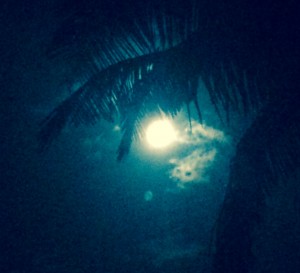
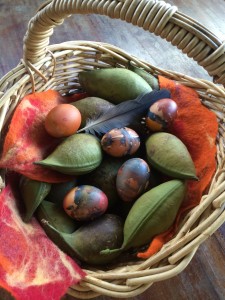

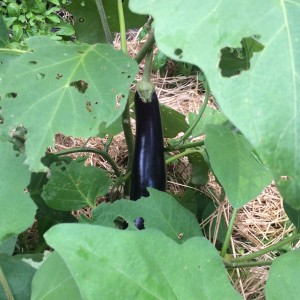

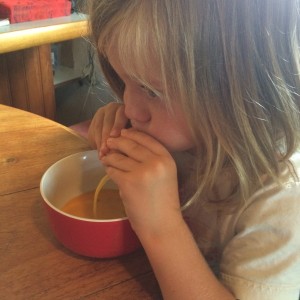
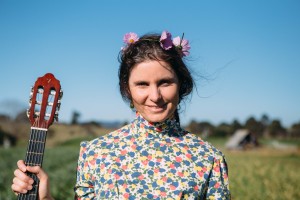
Thank you so much for this post! I’ve been looking for ideas for Easter in Autumn and these are absolutely perfect! 😊
I love the idea of the real eggs but when cracked open reveal a different surprise. Do you have a tutorial to follow??
Have a great Easter
Zoe xoxo
Hi Ayla, yes this can be the super messy part! I’ve used a funnel sometimes and other times the hole is big enough just to spoon it in. I should also mention that little little ones might need help on the day eating the egg to make sure they don’t chew on bits of the shell in their haste to get to the chocolate. It’s definitely the more messy option compared to bought Easter Eggs but I think that probably makes it all the more fun for my boys! Good luck xx
Hello Annie,
Lovely post. Here is a story for you, too!
The Green Tree Village and the Hare
https://www.dropbox.com/s/27gv10zvrzv1xe0/The%20Green%20Tree%20Village%20and%20the%20Hare.pdf?dl=0
Wishing your family a blessed Eastertide!
Christine
Dear Christine,
Thank you so much for this beautiful story! It so captures the spirit of Easter – really lovely. Have you used it with young children? I could so imagine the tree and animals and the children. And my apologies for the slow response…I somehow only just found your comment! I hope you and your family enjoyed a rich Easter festival together xx Annie
So beautiful, thank you Annie!